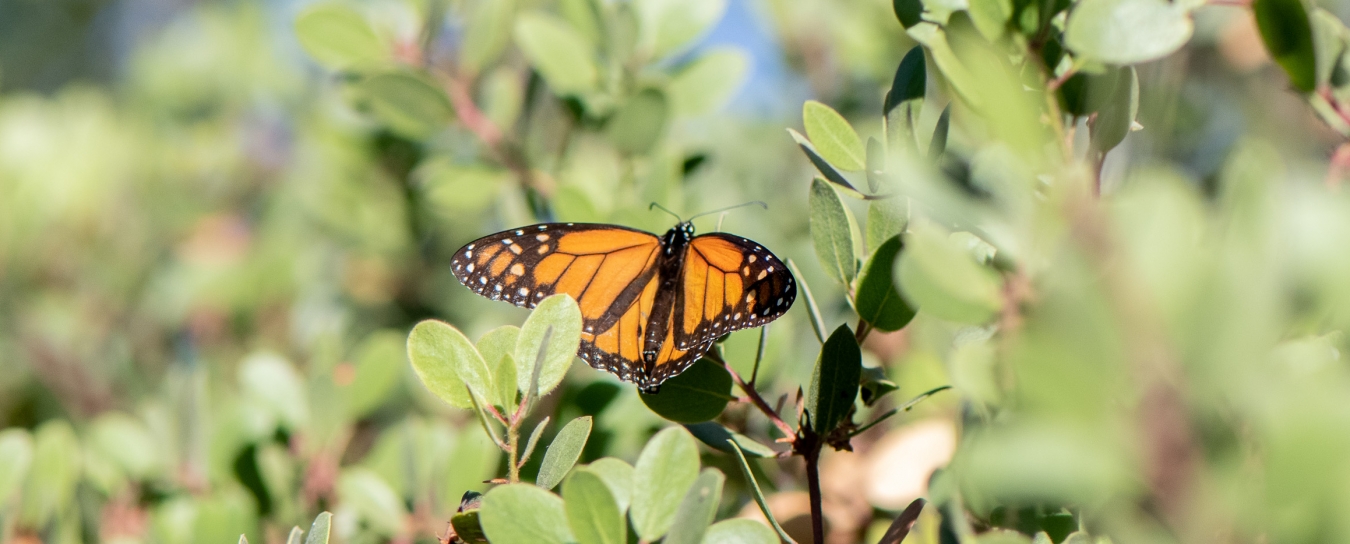
Invertebrates
See our handy guide to critters found in local homes and our Central Coast Butterfly FAQ. Browse the insects and other terrestrial arthropods we’ve identified. Check out local marine invertebrates, particularly bivalve mollusks and intertidal organisms.
- Anthropology
- Rocks & Fossils
- Invertebrates
- Vertebrates
- Botany
- Astronomy
- Fungi
- General
- Recently Asked
What are these tiny insects?
Hi there,
I'm wondering if someone may be able to help me with an insect ID. Three days ago we noticed these guys all over our second story balcony, our front porch, sidewalk, and cars parked on the street. We've been sweeping our balcony and porch each day and by morning, there they are again. This day three, since we first noticed. We walked to the end of our block (maybe 10-12 houses down from us) and they're down there too. So I don't think it's something a nest that hatched at our house or a new pesticide an immediate neighbor is using. They're extremely small and hard to see unless you get down low and look for them. We only noticed them the other day because we forgot a light-colored blanket outside overnight and in the morning we could see it was completely covered.
Here's the weirdest part.. None of them are moving. None. They're either dead or maybe moults? They're very very light in weight. Will blow away just with a normal breath if you're a foot away. We've asked around our neighborhood, asked friends, and even posted in an insect ID group online and no one has any idea what this is/what could be causing thousands of them to fall to the ground every day. I've attached some pics including a couple we took with a little magnifying camera we have.
I'd love to know if anyone on staff has any ideas!
Thanks so much,
Kelly Adams
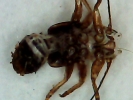
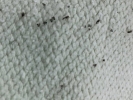
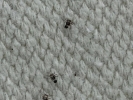
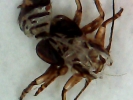

Curator Response
Hi Kelly,
Let me guess: your yard, and some of your neighbors' yards, have Tipu trees (Tipuana tipu), a yellow-flowering legume tree! The organisms you photographed appear to be a pest of these ornamental trees that was fairly recently introduced to California called the Tipu Psyllid (Platycorypha nigrivirga). What you're looking at is indeed the exuviae (molts) of these tiny critters. As they use their piercing/sucking mouthparts to feed from the foliage of the trees, they go through several nymphal stages, which actually look quite different from the adults. These exuviae are produced at the end of each nymphal stage and fall from the tree. The nymphs are yellowish with black bars and bands, while the adults are more solid yellow or green and have long, clear wings that are held swept back. Adults resemble a tiny version of their distant relatives, the cicadas.
A lineup of the nymphal stages can be seen here; a live adult can be seen nicely here.
Sometimes these psyllids can absolutely cover the leaves of a Tipu tree, defoliating it if the population is large enough. They are also notorious for dripping honeydew, a sugary substance, from their abdomens as they feed. This honeydew can cover objects below (such as a car) in a sticky mess.
Thanks for sharing this interesting find,
Schlinger Chair and Curator of Entomology Matthew L. Gimmel, Ph.D.


